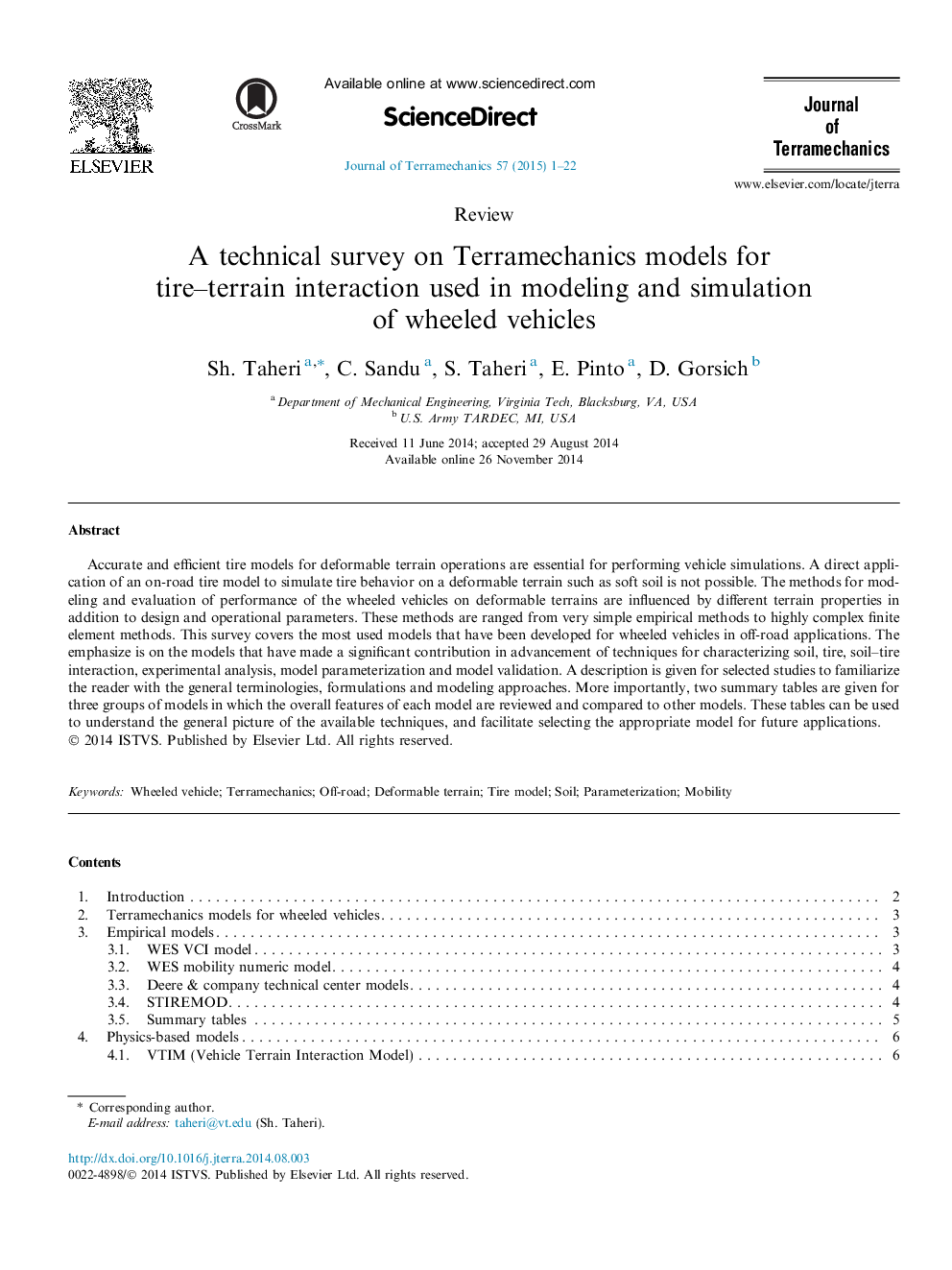| Article ID | Journal | Published Year | Pages | File Type |
|---|---|---|---|---|
| 801477 | Journal of Terramechanics | 2015 | 22 Pages |
•This survey covers major tire models developed for off-road applications.•The emphasis is on tire/soil modeling, testing, and model validation.•The models are grouped into three main categories.•Main modeling methods are: empirical, physics-based, and semi-empirical.•The main features of different models are explained and compared.
Accurate and efficient tire models for deformable terrain operations are essential for performing vehicle simulations. A direct application of an on-road tire model to simulate tire behavior on a deformable terrain such as soft soil is not possible. The methods for modeling and evaluation of performance of the wheeled vehicles on deformable terrains are influenced by different terrain properties in addition to design and operational parameters. These methods are ranged from very simple empirical methods to highly complex finite element methods. This survey covers the most used models that have been developed for wheeled vehicles in off-road applications. The emphasize is on the models that have made a significant contribution in advancement of techniques for characterizing soil, tire, soil–tire interaction, experimental analysis, model parameterization and model validation. A description is given for selected studies to familiarize the reader with the general terminologies, formulations and modeling approaches. More importantly, two summary tables are given for three groups of models in which the overall features of each model are reviewed and compared to other models. These tables can be used to understand the general picture of the available techniques, and facilitate selecting the appropriate model for future applications.
